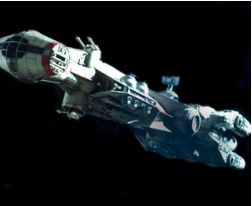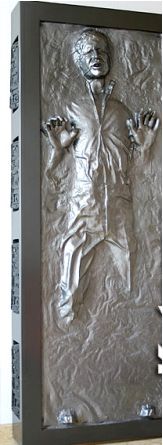| |
 | Corellia is one of the Core Worlds, home to the sector’s best pilots (it is Han Solo’s homeworld) and best shipwrights (the Millenium Falcon was built on Corellia, as was the Tantive IV, Princess Leia’s CR90 Corvette from the original, 1976, Star Wars movie). The Corellian Engineering Corporation supplies most of the freighters in use throughout the galaxy, as well as a number of other civilian spacecraft. To fill the large numbers of new orders for the Rebel Alliance, new test facilities have been constructed in remote locations and many new engineers and pilots are being hired to test the new models. You have been asked to assemble the basic rocket ship and adjust and fine tune the ship to meet the specified flight requirements (listed in the competition rules below).
|
- Teams that complete the online Physics Olympics registration will be provided with a rocket kit (Estes Viking rocket, assembly required), eight igniter packs, and six rocket engines (one A3-8, two B6-4, one C6-3, and two C6-5 engines). A single rocket launch kit and additional engines are available free of charge from the Physics Olympics organizers upon request.
- Each team will construct the rocket supplied by the Physics Olympics organizers. Teams may decorate and modify the provided rocket, as long as it is still recognizable as an Estes Viking model rocket.
- The supplied engines are to be used to characterize the rocket’s performance, with the expectation that teams will perform sufficient practice flights to be able to understand how the rocket performs with the various engines provided. The team must decide which type of engine they will use for the competition and decide how long their rocket will stay aloft after being launched with that engine. The manufacturer’s specifications for each type of engine are posted at the Estes website.
-
 During the registration period on the day of the 2006 Physics Olympics, each team will submit their rocket, the type of engine they wish to use during the three competition flights, and their prediction for the time the rocket will remain aloft using that engine.
During the registration period on the day of the 2006 Physics Olympics, each team will submit their rocket, the type of engine they wish to use during the three competition flights, and their prediction for the time the rocket will remain aloft using that engine.
- The judges will provide three of the requested type of engines for use in the competition.
- Teams will be responsible for the safe launch of their rocket for three flights during the competition. The range safety officer will be the sole arbiter of safety during the competition. Unsafe conduct is grounds for immediate elimination from the event.
- Timing will begin with the ignition of the rocket’s engine and ends when the rocket touches the ground. At least three judges measure the duration of each rocket’s flight, with the official time taken from the median measured time. Should the rocket drift out of sight, the time will be measured until the instant when the rocket is no longer visible from the position of the timers.
- The winner of the competition will be the team who most closely predicts the total time aloft for their rocket. Ties will be broken using the time of the flight that is next closest to the median time aloft.
- All contestants will ensure that their entry works through the application of physics principles and generally follows the spirit of the competition.
Event 3: Planet Hunt – The Communication / Calculation Challenge
Students will use teamwork, communication and calculation skills to achieve the specified goal. Two members of the team will be presented a set of measurements to make. The remaining two team members will be presented with this set of measurements and be required to compute the desired properties from the data with no additional communication. Finally, the judges perform the test and score the team's effort according to the announced guidelines.
Event 4: Impromptu Team Physics Activity – Death Star Assault
 | Activity is the key word for this competition, with the goal being for each team to achieve the desired result as quickly as possible. The situation is designed to reward teamwork and common sense thinking as well as knowledge of physics and the ability to work with formulae. Every team will come away with smiles and good memories regardless of how well they master the particular challenge. |
Event 5: Order-of-Magnitude Quiz (also known as Fermi Questions)
Arrive at a reasonable approximation for the value of a complex situation with very little to no information available to directly compute the answer. In this quiz, the contestants will need to quickly make assumptions for values to use in simple calculations in order to arrive at the "correct" answer, stated as the power of ten of the number that fits the accepted value.
Teams will receive 7 questions to complete within 15 minutes. The teams can divide the work in any way they see fit, but only one answer per question per team will be accepted.
Answers will be judged according to how many orders of magnitude the team's answer is from the judge's solution. The lowest score wins -- 0 points awarded for the answer accepted by the panel of judges, with 1 point scored per order of magnitude from the accepted value.
Examples of Order-of-Magnitude Quiz questions include:
- How many electrons enter the starter motor when a new, full-sized pickup starts?
- How many times would a tire of a Ford Taurus rotate when driven from NYC to LA?
- Estimate the number of gallons of gasoline used annually by all the cars in the USA.


